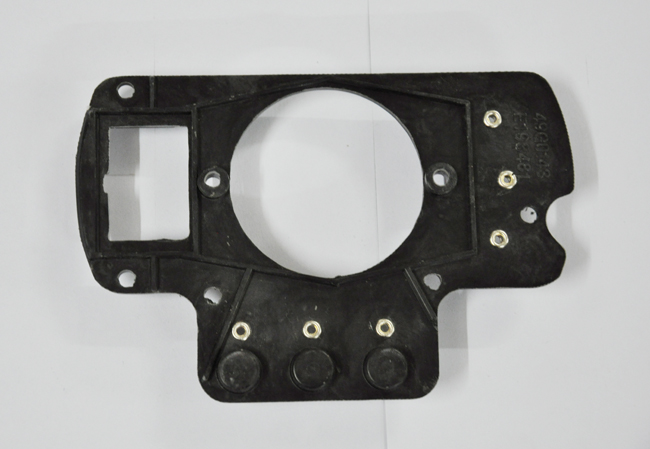BMC (bulk molding compound) or DMC (double molding compound) is called bulk molding compound (formerly known as BT-3), which, like sheet molding compound, is a thermosetting molding compound reinforced with short cut fibers.
Nowadays, in the United States, Japan, and China, BMC and DMC generally refer to the same material. According to the definition of SPI in the United States, BMC is chemically thickened DMC.
It has a series of excellent physical functions such as impact resistance, compression resistance, bending resistance, tensile resistance, high electrical capacity, high surface resistance, high insulation strength, high arc resistance, non-toxic corrosion resistance, flame retardancy, etc. It particularly has good fluidity, low molding pressure, short molding time, and low molding temperature.
It is widely used in the following categories:
1、 Electrical and electronic components: shells and structural components of various high and low voltage electrical switches, explosion-proof electrical components for chemical and mining industries, complete packaging of motors and solenoid valves, busbar frames, terminal blocks, insulation rods, insulators, various specifications of insulation boards, etc.
2、 Car industry: car body, bumper, headlight bracket, headlight bowl, trunk and other interior components and functional parts.
3、 Exterior industry: exterior frames, exterior shells, control levers, etc.
4、 Civilian products: sanitary ware, decorations, dishwasher liners, utensils, etc. (66-10MW microwave oven vessel specific BMC material, non-toxic and heat-resistant)
Five other aspects: electronic copiers, printing machinery, structural components of working machinery, electronic computer parts, etc. The basic characteristics of BMC are: mostly chemically thickened; Glass fiber content between 9% and 25% is slightly lower in physical and mechanical properties compared to SMC (Sheet Molding Compound), which has superior electrical and corrosion resistance, light weight, simple engineering design, and sensitivity. Its mechanical function can be comparable to some metal materials, and therefore it is widely used in transportation vehicles, construction, electronics/electrical and other professions; The short cutting length scale is 3-25mm; The filler content is mostly higher than SMC; The material flowability, molding processability, and apparent quality of the product will be better than SMC; Products with intricate and complex structures such as thin-walled and narrow shapes highlight their advantages. But the molding conditions, process management, defect countermeasures, and mold methods are all similar to SMC technology.

